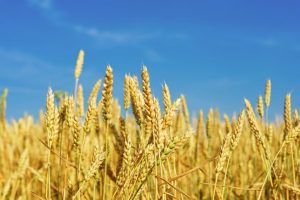Looking for a comprehensive guide on how to start a wheat farm in Nigeria? Read this article and get a business plan to kickstart your endeavor.
There are several steps that you need to take to make wheat farming a success. These include proper soil preparation, early planting and harvesting, and fertilizing the soil. Following these steps will help you grow healthy and nutrient-rich wheat. These are essential in commercial wheat farming. For best results, start plowing in the early morning hours.

Essential Steps for Wheat Farming
Early planting
Wheat farmers can make the most of early planting by planting varieties that are resistant to pests and diseases. However, this method comes with its own risks. Early planting increases the risk of disease outbreaks, especially virus diseases. Early planting gives the flies a longer window to develop, and increases the severity of the disease.
Although the effect of planting date on wheat yield is generally consistent in most years, it may vary from year to year depending on the climate, plant variety, and disease pressure. In some years, early planting yields may be lower than late plantings. This is largely dependent on the weather in the spring and fall. In a warm autumn, an early planted field may produce too much biomass, which lowers the yields. Early plantings may also suffer from soil water deficits during the grain filling stage.
Another disadvantage of early planting for wheat farming is that it exposes the crop to a range of problems, including viral diseases and decreased emergence due to high temperatures. In addition, the risk of frost damage and spring freeze injury is increased. Also, early planting may promote lodging and can be a risk factor for aphids and pests.
Early harvesting
Early harvesting in wheat farming may have benefits for both the farmer and the market. Early harvesting prevents losses, including shattering and lodging of the grain. It also helps preserve quality. Early harvesting saves costs associated with drying and can increase the profitability of a wheat crop. However, there are some drawbacks to early harvesting in wheat farming.
Wheat harvesting is delayed by wet weather. It’s difficult to break the stalks while they are still wet. The crops need the sun to dry out the dew. Moreover, if the weather is too wet or too dry, the stalks become hard and the grain is more difficult to separate from chaff. Early harvesting in wheat farming requires proper planning and knowledge of the weather conditions.
Early harvesting allows a farmer to save quality while reducing labor. It also allows for in-bin drying and timely planting of double-crop soybeans behind wheat. This double crop can yield more bushels per acre.
READ – DOWNLOAD WHEAT FARMING BUSINESS PLAN
Fertilized soil
Fertilized soil for wheat farming is essential to the success of your wheat crop. Fertilized soil has enough available S for the plant to utilize N in an optimum way. Soils with a low available S level should not be planted in wheat fields. To improve your soil fertility, you can perform soil tests and apply fertilizers that have adequate levels of K. The K level in your soil should be at least 161 ppm, and fertilizer rates of two to seven kilograms per hectare or 1.7 to six pounds per acre are recommended.
Fertilized soil for wheat farming should contain approximately 35 to 50 percent of the total nitrogen. For a full acre, the recommended N rate is four to seven kg (6.6 to 13.6 lb). However, if you are growing wheat in a sandy soil, you may have to add additional nitrogen to the soil.
Diseases
There are a variety of diseases that affect wheat and other cereals on your quest on how to start a wheat farm. Most are restricted to temperate areas. Infected wheat plants experience major losses due to seed shriveling and decreased test weight. Fortunately, these diseases are largely preventable. Disease-control methods include the use of healthy seeds and resistant varieties.
A fungus known as wheat mosaic virus can cause severe damage to wheat. This fungus lives on the soil and spreads on crop debris. Infected plants initially show no symptoms until ear emergence. This fungal disease is primarily prevalent in cool temperate regions, and nitrate-rich soils are particularly conducive to its development. It begins as an infection of the roots, and can progress to other parts of the plant including the crown.
Fusarium head blight is another major problem. The fungus causes serious damage to wheat plants, and can infect individual spikelets or entire heads. When affected, spikelets may turn tan or brown and contain salmon-colored fungal growth. In severe cases, the affected grain may be white or pinkish. If the disease is left untreated, the grain can be contaminated with mycotoxins, which are toxic to humans.
Insects
One of the main causes of losses in wheat crops is an infestation of insects. There are many types of insects that attack wheat crops. Several other factors can also impact the condition of grains. Here is a list of common problems caused by insects in wheat. The condition of the grain is affected by temperature, weather, and other factors. Knowing these factors will help you identify problems.
Sucking pests are plant-feeding insects that feed on plant tissues. They are considered regional pests. Resistance to sucking pests is often passed down through inheritance. There are three main types of mechanisms that confer insect resistance: single gene resistance, polygenes (genes with small additive effects), and cytoplasmic genes.
HF maggots attack wheat seeds mainly during the vegetative growth stage. They damage the photosynthesizing machinery and stunt growth. These insects inject toxins into the seed during their feeding, which inhibit growth. A single maggot can cause significant damage to a wheat plant. It can even kill a single leaf stage.
Bird cherry-oat aphids are another serious pest of wheat. They can reduce yield by 30% or more. The yield loss depends on the time of the infestation relative to the plant’s growth. They can also transmit Barley yellow dwarf virus, a virus that causes severe crop loss.
Profitability
The profitability of wheat farming depends on the soil productivity. There is a wide range of returns, so producers need to take this into account. Producers pay a 20 percent share rent for the land they use. This is different from county to county. Farmers who own their own land can get a higher return on their investment.
The cost of inputs is another significant expense. This is between $12 and $30 per acre. However, good management can reduce these costs and boost profitability. One way to reduce this expense is to use light tillage or no-till in some fields. Some farmers are experimenting with these options.
Some diseases can decrease yields, especially stem rust and leaf rust. Some of these diseases can be prevented by applying insecticides. Seed Co wheat varieties are resistant to these diseases. In addition, two preventative fungicide sprays should be applied in disease-prone areas. These treatments help to reduce the impact of climate change.
Now that you know how to start a wheat farm, are you ready to get a business plan.
How To Download Wheat Farming Feasibility Study Template PDF and Doc
Above is a part of the wheat farming business plan n Nigeria. In case you need the complete study, follow the procedures to download it.
Pay the sum of N5000 (Five thousand naira only) to the account detail below:
Bank: GTBank
Name: Oyewole Abidemi (I am putting my name and not our company account so you know we are real people and you can trust us)
Ac/No: 0238933625
Type: Saving
Thereafter, send us your email address through text message to +234 701 754 2853. The text must contain the title of the wheat farming business plan you want and also your email address. Immediately after the confirmation of your payment, we will send the document to your email address where you can easily download it.
